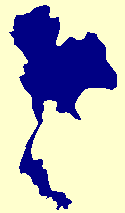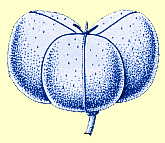
Flora of Thailand
Euphorbiaceae

 |
|
 |
Goto on this page:
Aubl., Hist. Pl. Guiane Fr. 2: 871, t. 335. 1775; Mόll.Arg. in DC., Prodr. 15, 2: 716. 1866; Pax in Engl., Pflanzenr. IV.147.i: 117. 1910; R.E. Schult., Bot. Rev. 36: 197. 1970; Econ. Bot. 41: 125. 1987; Malaysian Rubber Res. Dev. Board Mon. 14: 5. 1990; G.L.Webster, Ann. Missouri Bot. Gard. 81: 99. 1994; Radcl.-Sm., Gen. Euphorbiacearum: 271. 2001; Hoang Van Sam & Welzen, Blumea 49: 433. 2004; Welzen in Welzen & Chayam., Fl. Thailand 8, 2: 331. 2007; G.L.Webster in Kubitzki, Fam. Gen. Vasc. Pl. 11: 164, Fig. 38. 2014. Siphonia Rich. in Schreb., Gen. Pl. 2: 656. 1791. Caoutchoua Gmelin, Syst. 2: 677. 1791. Siphonanthus Schreb. ex Baill., Ιtude Euphorb.: 324. 1858.
Trees, monoecious. Indumentum of simple hairs, glabrous except for inflorescence. Stipules caducous. Leaves alternate, trifoliolate; leaflets symmetric, papery, basally attached, without glands, margin entire to wavy; venation pinnate, nerves looped and joined near margin, veins scalariform, veinlets reticulate. Inflorescences axillary to pseudo-terminal panicles, single per axil, often in groups; staminate flowers in cymules, pistillate flowers single at end of branches. Flowers actinomorphic; calyx 5(6)-lobed, valvate, lobes ovate, apically pointed and often bent; petals and disc absent. Staminate flowers: stamens 10, united, in 2 layers of 5 along androphore, apical part of latter the pistillode, anthers 2-locular. Pistillate flowers: calyx basally thickened; ovary 35-locular; ovules 1 per locule, apically beaked; stigmas sessile, horizontal short lobes. Fruits lobed rhegmas, woody. Seeds ellipsoid, flattened, marbled, without an arilloid.
Ten species in Amazonian South America, one of great economic importance and found cultivated throughout the tropics, also in Thailand. Classification: Subfam. Crotonoideae, tribe Micrandreae, subtribe Heveinae.
Hevea brasiliensis (Kunth) Mόll.Arg., Linnaea 34: 204. 1865; in DC., Prodr. 15, 2: 718. 1866; Pax in Engl., Pflanzenr. IV.147.i: 210; R.E.Schult., Bot. Rev. 36: 197. 1970; Econ. Bot. 41: 125. 1987; Malaysian Rubber Res. Dev. Board Mon. 14: 5. 1990; Ghani & Wessel in E.Boer & Ella, PROSEA 18 (Plants producing exudates): 73. 2001; Hoang Van Sam & Welzen, Blumea 49: 434, fig. 3. 2004; Welzen in Welzen & Chayam., Fl. Thailand 8, 2: 332, Fig. 6, Plate XVII: 4. 2007. Siphonia brasiliensis [Willd. ex A.Juss., Euphorb. Gen. pl. 12, 38b, nom. nud.] Kunth in Humb., Bonpl. & Kunth, Nov. Gen. & Pl. 7: 171. 1825.
Trees up to 7 m high. Stipules not seen. Leaves: petiole 315 cm long; petiolules 510 mm long; leaflets elliptic, 521.5 by 27.5 cm, index 2.53.1; base attenuate, apex acuminate to cuspidate; venation distinct on both sides, nerves 1427 till apex. Inflorescences up to 31 cm long. Staminate flowers 4.55 mm in diameter, yellowish, sweet scented; pedicel variable; calyx 56.2 mm long, lobes 24.5 by 0.51.5 mm; androphore 2.22.8 mm long, stamens 0.50.8 by 0.20.3 mm, pistillode 0.81 mm long. Pistillate flowers c. 5 mm in diameter; calyx c. 7 mm high, lobes c. 4.5 by 1 mm; ovary c. 2.2 by 2.2 mm; stigmas c. 0.2 mm long. Fruits c. 5 cm high. Seeds c. 2.4 by 1.9 by 1.5 cm.
T h a i l a n d. Cultivated in plantations, mainly in the South-eastern and Peninsula. Reported 'wild' (escaped) for: SOUTH-EASTERN: Chanthaburi (Pong Nam Ron), Trat (Ko Chang); PENINSULAR: Trang (Ban Nam Phrai), Satun (Kuan Sato, Tapan Lek), Narathiwat (Waeng).
D i s t r i b u t i o n. Originally from Amazonian South America (Brazil: type), presently cultivated world-wide in the tropics.
E c o l o g y. Reported wild and common in evergreen forest, probably because plantations have been abandoned; in fact only known from cultivation. Once reported from limestone. Altitude: sea level up to 200 m.
V e r n a c u l a r. Yang (ยาง), Yang para (ยางพารา) (General); Ka-to (กะเต๊าะห์) (Malay-Peninsular); Para rubber (English).
U s e s. Of huge economic value. The bark is tapped for its latex by making shallow, v-shaped cuts over 1/3rd of the circumference, working from c. 2 m high toward the root, moving to the next third once a row is finished. The elastic strings of polymers of cis-polyisopreen, when still unvulcanised, are easily detached from each other and they are therefore used in chewing gum (n.b. Hevea is one of the few Euphorbiaceae with a non-poisonous latex). Vulcanised (mixed with sulphur and baked) the strings become solidly attached to each other and have many applications as rubber. Natural rubber is more elastic and durable than artificial rubbers. Its main use is undoubtedly in tyres (next to condoms due to the HIV virus). The tyres are presently more and more re-used as furniture, shoes, and waste baskets in S.E. Asia and in a new kind of tarmac in Europe.
When the latex production of the fast growing trees decreases they are cut and the wood, though not durable and strong, is more and more used in Thailand for the production of beautiful, light coloured furniture, flooring, and wooden toys for children.
The trees are also excellent shade trees when young; in Peninsular Thailand the shade loving Amorphophallus (Araceae) is often grown between the rows of trees for its starch rich tubers.